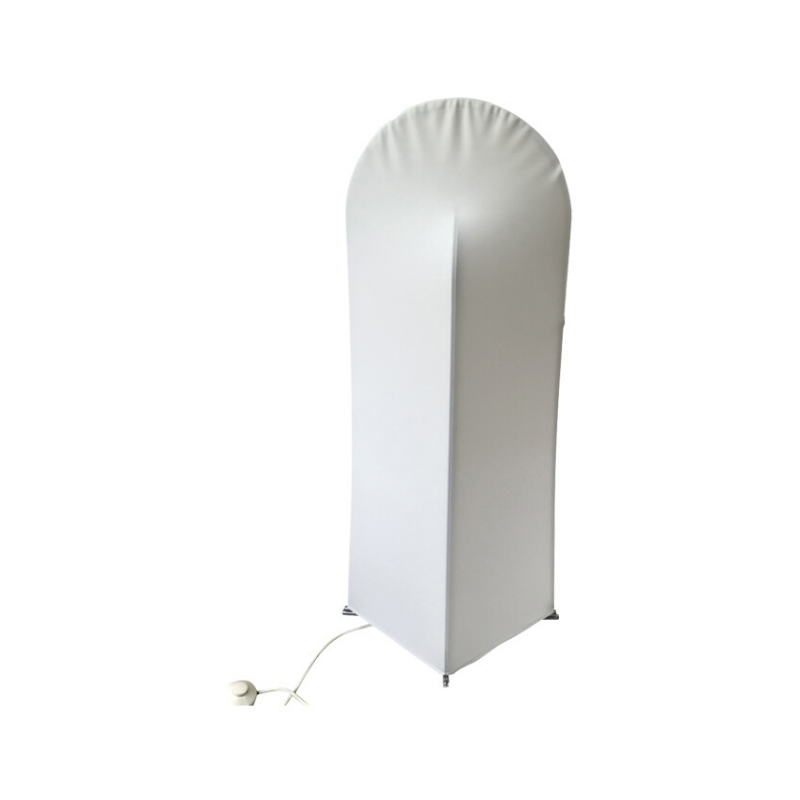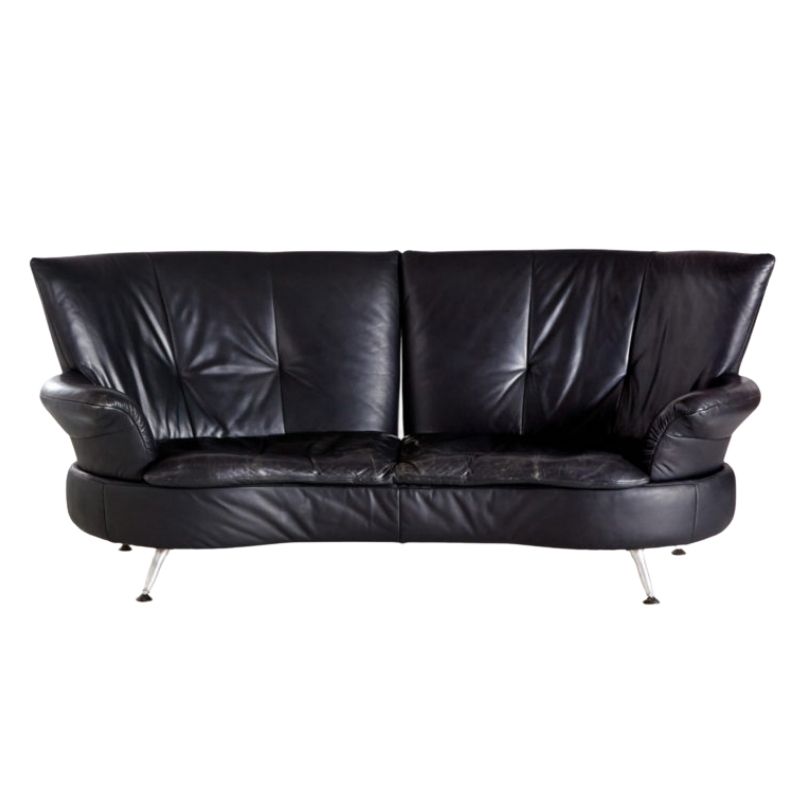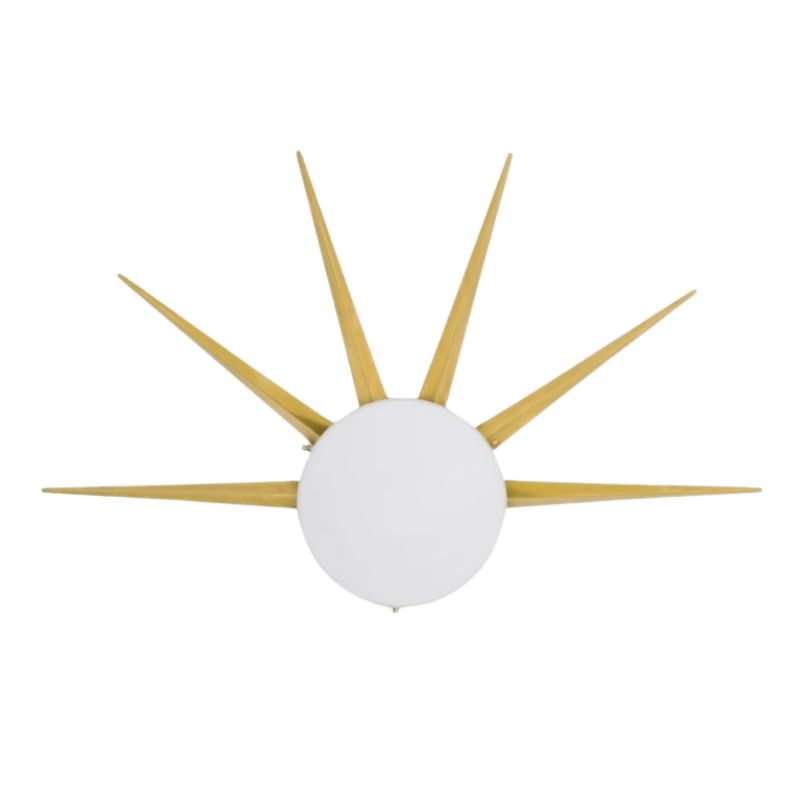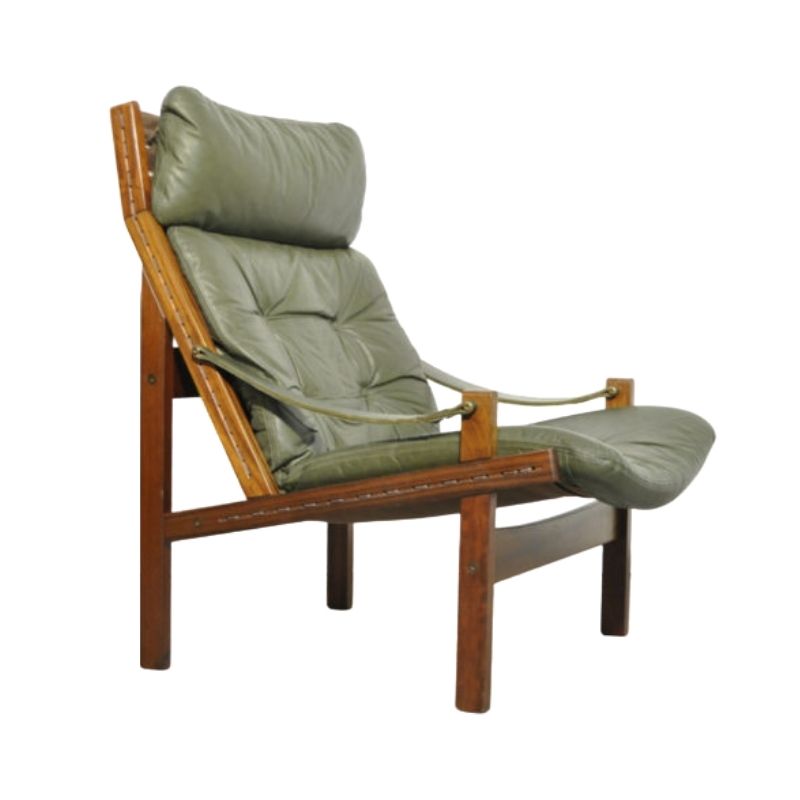I've seen newer chairs with plastic welt cord but very few!
Leif, I recently redid a Rondo chair (metal frame, very tight radius plywood back but same idea) and the original fabric on the back was machined stitched along the top edge (inside back to outside back). I could not for the life of me get a nice fit with machine stitching so I gave up and did it like you described---stapled the inside back to the frame, then stapled the bottom edge of the outside back to the frame---then hand-stitched the outside back in place. It looked perfect whereas the first tries look horrible. It wasn't done as the original but in driving myself crazy trying to get it right, I realized that of course whoever upholstered the original did lots and lots of them and had exact patterns and all that stuff that goes along with production work. Whatever---worked out fine in the end!
This is NOT the one I did. I forgot to take photos of that one, as usual. /hijack
I see. So the fabric folds over the welt, the welt is secured, then the fabric is stapled along the bottom, in that order? If that's the case, you're right - I don't see the back needing to come off. Is the welt glued or stapled from the bottom or is it secured all the way around (I obviously know nothing about upholstery 🙂 )
I wonder if I should plan on having this done (not sure on pricing) and just remove the fabric so I can strip the wood without worrying about protecting the current fabric... hmm...
There are different ways to finish the ends of an back/arm like that, and often the only way to know for sure how it was done is to undo it. But that's kind of beside the point. It will be tricky to use stripper on the chair with the fabric in place, and it sounds like you're not sure you even want to keep the fabric.
I think the next step is to take one chair around to a couple of upholsterers in your area and get an estimate for reupholstering completely. The good news is that you don't need much fabric at all (about 3/4 yd per chair) and that it's possible to get really good, durable, beautiful Danish upholstery fabric online for less than wholesale. So that part won't set you back much at all. And a huge advantage of redoing the fabric is that you can pick a color and texture that will hide not just bigger stains but also just the everyday grime that accumulates on dining chairs with normal use! I will never understand why so many are done in light colors! It's so impractical. I hate worrying about what family and friends are doing to the furniture during a meal, y'know? I just want to enjoy the food and company.
Anyway, always ask to see the upholsterer's work and pay special attention to details, even when they are the kind of thing that your chairs do not have. There should not be any ripples or puckers in seams, no tucks in the fabric around dining chair seat edges (except a few small, neat ones on square corners), no blobs of hot glue showing, no lumps in the padding, and on welt you should not be able to see any of the seam stitching (i mean welt should be sewn into the seam right up to the welt itself). Grain should be straight---meaning, the crosswise and lengthwise threads of the fabric should be perpendicular and parallel to the sides of the piece. Sometimes one will be off because the grain itself is skewed but if both are off then it's a sign of sloppy work. And lastly, the padding or cushion thickness should look appropriate to the piece.
Also, upholsterers' fees vary a lot so if the first quote you get seems really high, get another one or two. You never know.
We use lemon oil and 0000 steel wool for this type of project. That's one easy way of knowing you're not putting a teak oil that contains varnish on them.
You'll be amazed how good the wood looks with very little effort 🙂
http://www.dteps.com/Parker-Bailey-Natural-Lemon-Oil-Polish-16oz_p_339.html
http://www.acehardware.com/product/index.jsp?productId=1274408
I think either of those two Star-brite products are fine. I've used both and frankly I can't tell the difference. Check Ace Hardware if you have one nearby--their prices are way better than other sources, around here anyway, and no shipping.
Staceyneil, I got all excited about lemon oil a few years ago but then found it was just too light an oil to last long. Everything looked really great for a couple of weeks, but then it started looking kind of dry and had to be oiled again. Or maybe it doesn't oxidize the same way teak oil does?
[looking up data sheet] Ah...yeah, it's mineral oil, which doesn't dry and harden the way the oils in teak oil do. Interesting.
Yeah, lemon oil is not a drying oil, so it will stay wet until it evaporates. I am not a huge fan, as it results in an oily, wet surface. I've refinished a few pieces that were treated with lemon oil, and it is most unfortunate when it is used over an oil based film finish like was used in the 70s and 80s. The film finish wears away in spots, resulting in a oily patchy ugly mess. Teak" oil is basically boiled linseed oil with additives and thinners, so it dries.
I have seen a recommendation from a Danish manufacturer to use, on teak furniture, equal parts raw linseed oil (flaxseed oil), turpentine, and mineral oil. I have never tried this, but in theory it will dry, eventually. The turpentine evaporates quickly, the mineral oil slowly, and the raw linseed oil, very slowly dries (very slowly being measured in months at least).
Edit: I guess my point is that it could be possible to formulate your own "teak" oil for steel wool cleaning. Boiled linseed oil could be used in place of raw for a faster drying finish. There really is no magic to this. Many people who use Tung oil (also a drying oil) mix the Tung oil with a varying amount of solvent, using more solvent for the first coats to get the oil deeper in.
That's really interesting about the lemon oil. That hasn't been our experience: we've been using it for 20 years on the 1950s and 60s Danish teak pieces we own, and it's always performed quite beautifully.
We do wipe it off completely after allowing it to soak in, so the surface is not wet and oily as you describe. On our furniture, even the Svend Madsen credenza next to the fireplace which is exposed to very dry air, we only re-apply lemon oil once a year or so... and mainly just for cleaning.
Regarding finishes: The most annoying thing we've found is when people have used something with a wax or silicone in it. Maybe furniture polish or something? Then the oils cannot penetrate where the build-up is and the surface is always patchy looking. I've spent too many hours trying to strip such coatings, with acetone, mineral spirits, etc, and many times I just give up. Does anyone have any recommendations?
@spanky - I just wiped on a 3rd coat of Star Brite to the chairs and I'm pretty happy with the results. I started with some Murphy's oil soap, which maybe wasn't necessary and did seem to dry out the wood as has been suggested, but no big deal. I then did some light sanding (320) and proceeded with the oil. The results are really nice.
One question though - how do I know when I should stop with the oil? The chairs looked a bit dry after 2 coats. After the 3rd coat they look ok, but I'm not sure when to stop. Any pointers?
Just keep going until the oil doesn't seem to make them look any different! Murphy's does a very thorough job of removing all the old oil finish so you have to do a bunch of coats to get it back to where it was. I quit using Murphy's for that reason. It's overkill most of the time, in my opinion.
You can wait a few days or a week between coats just to see if the oil is still soaking in. If you want more of a sheen, you can try one of the brands that has a little varnish in it, like Watco or even Formby's. They're a little trickier to use but not much.
I've used Watco Danish Oil and Formby's Tung Oil (low gloss version). They seem about the same to me but my experience has been limited. I like that Formby's comes in a smaller amount so you don't have as much waste with a smaller project. Oil with varnish added will eventually gel up, unless maybe if you can decant it into a smaller container so that there's no airspace. I think.
If you need any help, please contact us at – info@designaddict.com











